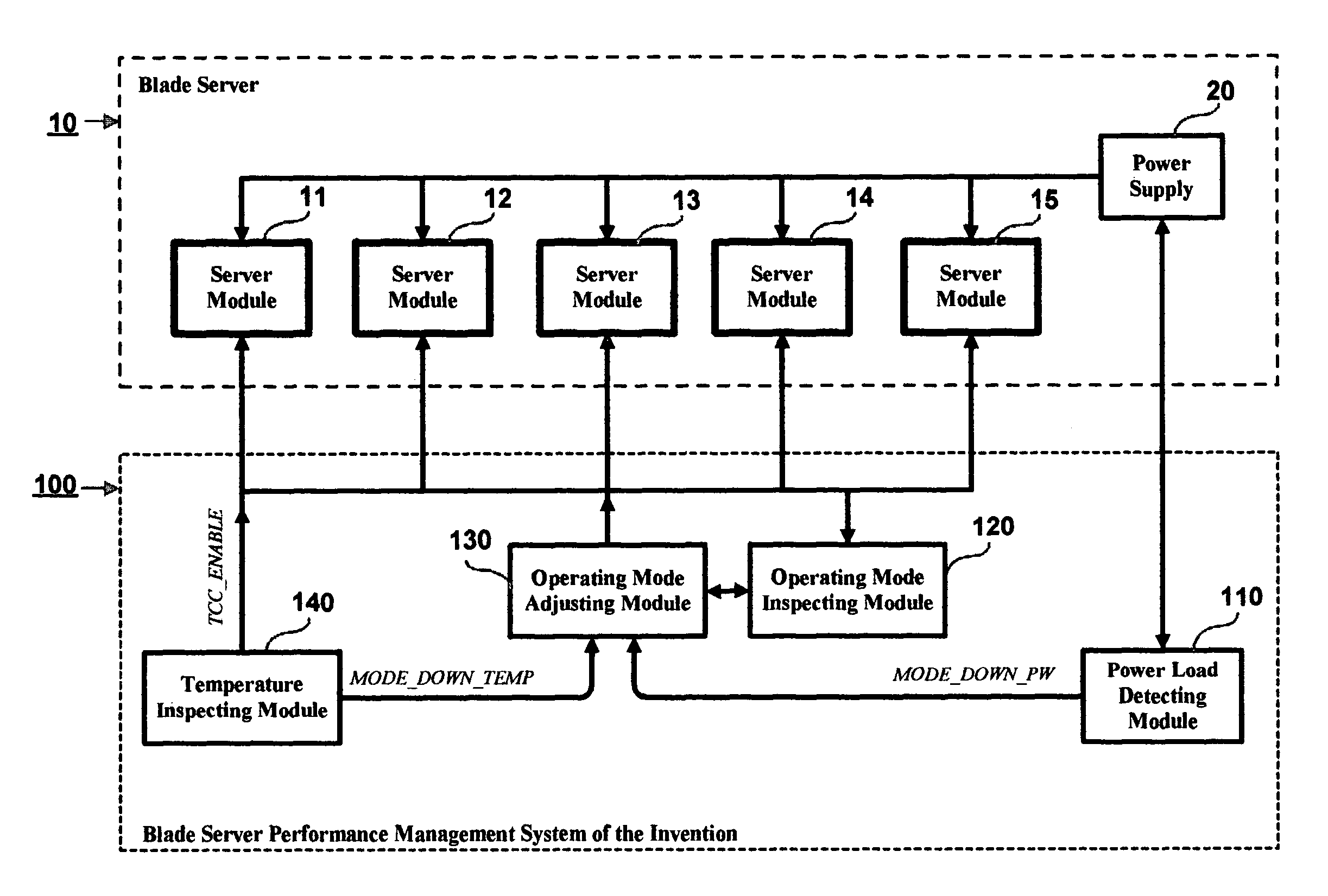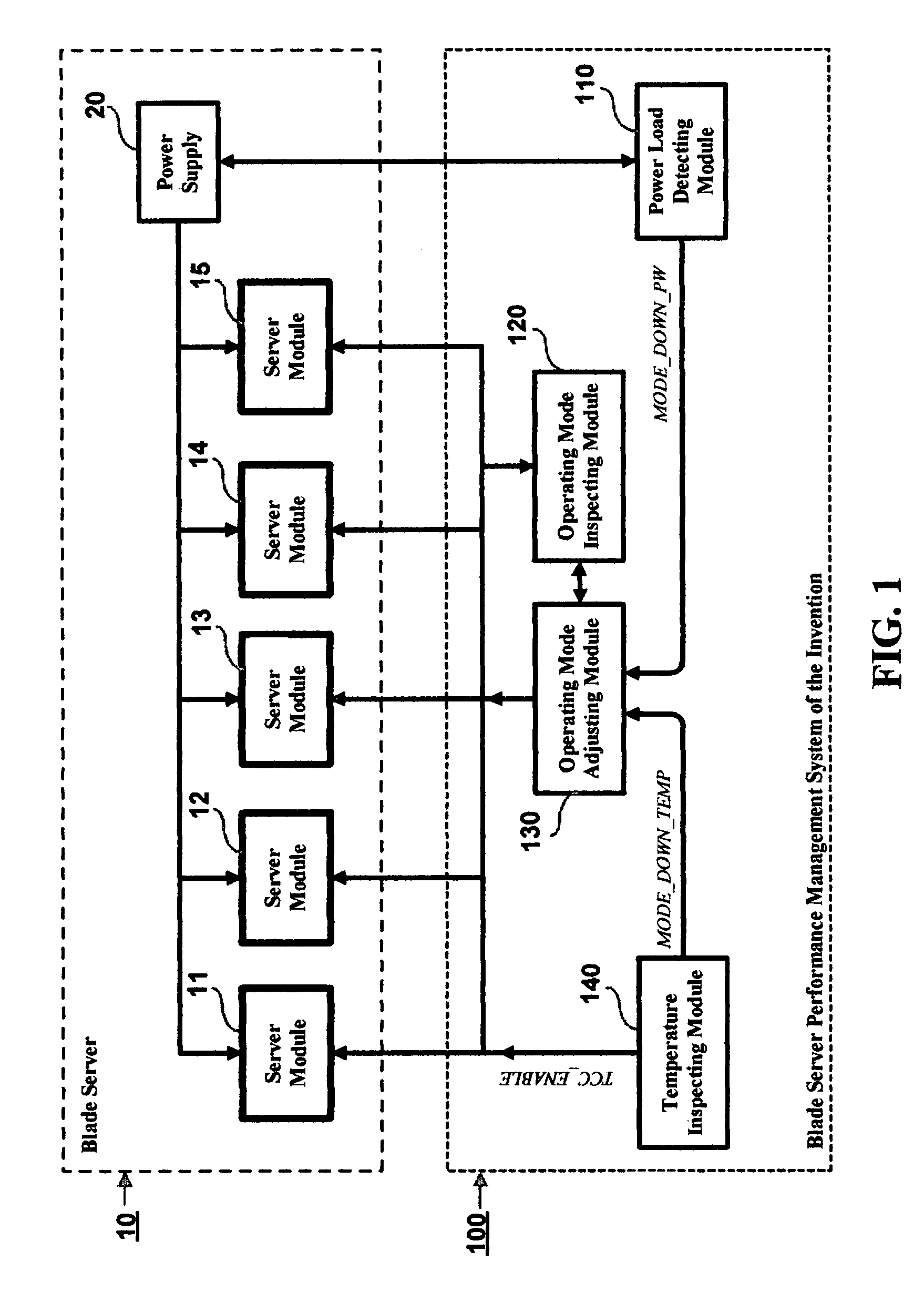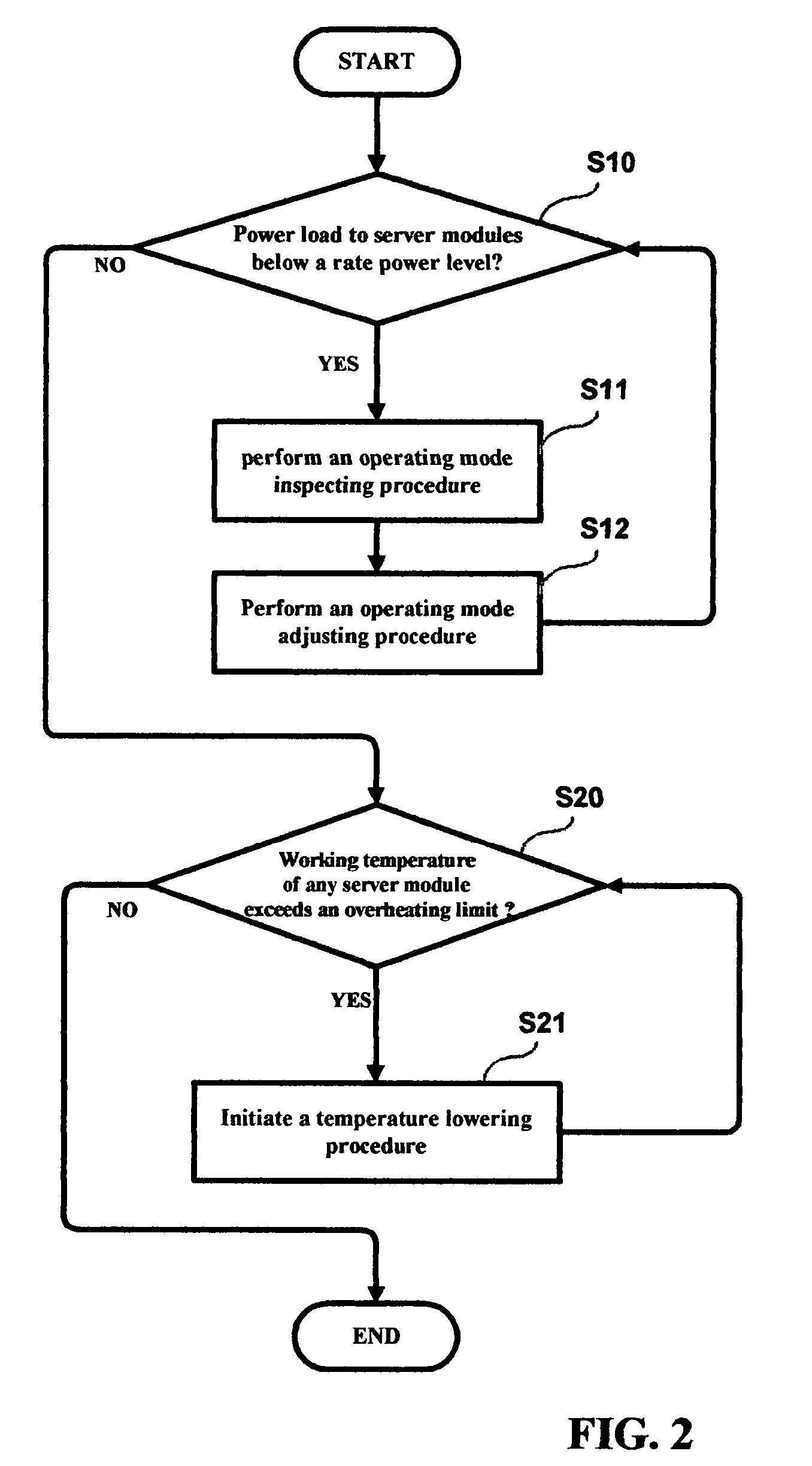Blade server performance management method and system
a server performance management and server technology, applied in the field of computer network server technology, can solve the problems of reducing the performance of the cpu, unable to operate normally, and being underpowered, and achieve the effect of sufficient power load
- Summary
- Abstract
- Description
- Claims
- Application Information
AI Technical Summary
Benefits of technology
Problems solved by technology
Method used
Image
Examples
first embodiment
[0032]By the first embodiment, the temperature inspecting module 140 is activated to issue a mode down request MODE_DOWN_TEMP to the operating mode adjusting module 130 to activate the operating mode adjusting module 130 to switch the overheated server module(s) to a lower level of operating mode. After this, the temperature inspecting module 140 will continue to inspect the subsequent working temperature of the previously overheated server module to see if it is now below the overheating limit; and if still not, the temperature inspecting module 140 will activate the operating mode adjusting module 130 to switch the overheated server module to a still lower level of operating mode (if available). This procedure will be repeated until the working temperature of the overheated server module is below the overheating limit.
second embodiment
[0033]By the second embodiment, the temperature inspecting module 140 directly issues a TCC enable signal TCC_ENABLE to the overheated server module to activate the overheated server module to perform a built-in TCC (Thermal Control Circuit) procedure to lower its working temperature by reducing performance, such as by reducing the duty cycles of the CPU clock signal to 30%-50%.
[0034]After the task of step S21 is completed, the procedure goes back to the previous step S20 to repeat the temperature inspecting procedure, wherein the temperature inspecting module 140 continues to inspect whether the subsequent working temperature of the previously overheated server module(s) still exceeds the overheating limit; if NO, the procedure is ended; whereas if YES, the procedure goes to the step S21 to repeat the temperature lowering procedure again. The looped steps S20-S21 are repeated until the temperature inspecting module 140 inspects that the subsequent working temperature of the previou...
PUM
 Login to View More
Login to View More Abstract
Description
Claims
Application Information
 Login to View More
Login to View More - R&D
- Intellectual Property
- Life Sciences
- Materials
- Tech Scout
- Unparalleled Data Quality
- Higher Quality Content
- 60% Fewer Hallucinations
Browse by: Latest US Patents, China's latest patents, Technical Efficacy Thesaurus, Application Domain, Technology Topic, Popular Technical Reports.
© 2025 PatSnap. All rights reserved.Legal|Privacy policy|Modern Slavery Act Transparency Statement|Sitemap|About US| Contact US: help@patsnap.com



